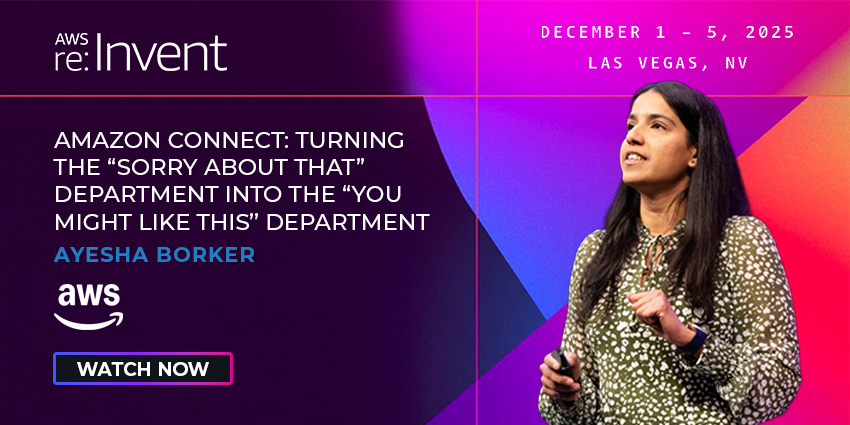Every day, a new technology provider seems to crop up, claiming to revolutionize customer service with their latest AI solution.
Amid this noise, separating the wheat from the chaff is more difficult than ever.
Recognizing this, CX Today contacted Ian Jacobs, VP & Lead Analyst at Opus Research, to isolate the most critical considerations to mull over when selecting a contact center virtual agent.
Below are five of those considerations, alongside a set of baseline capabilities every prospective conversational AI provider should offer.
1. The Best-Placed Pricing Model
There are many pricing models in conversational AI, and vendors are continuing to experiment. Some add options to existing models, while others move toward entirely new approaches.
Here are four of the most common models available today:
- Price per agent – This mimics the traditional contact center FTE replacement model.
- Price per action – This is a consumption model, based on what the agent does.
- Price per outcome – This performance-based model aligns with the agent’s success rate.
- Price per workflow – This supports full work automation, as the agent completes specific sets of actions.
Each model has pros and cons, and each suits a different type of brand. To decipher the best-placed pricing model, Jacobs suggests:
“Brands need to ask: Are we just starting out, or are we scaling fast? What kind of ROI alignment do we need? Do we need predictability or flexibility?”
That last question is perhaps most important. After all, if a contact center has lots of variable traffic and can’t predict usage, then a consumption model makes sense.
Meanwhile, a performance-based model may be a better option if a brand is scaling fast and is happy with its ability to track agent actions, outcomes, and ROI.
2. Usability for Real Teams
It’s becoming easier for non-technical teams to write prompts and build a bot. However, that doesn’t mean they should take the reins of virtual agent projects.
Instead, contact centers have a big decision to make: how much accessibility should we give to non-technical users? And beyond that, what does day-to-day manageability look like?
They may no longer need traditional speech scientists, but they will need people with real expertise, such as conversational designers.
A contact center’s capacity to establish that IT expertise should be a key factor in selecting the ideal solution, as some are more accessible to non-technical users than others.
3. Integrations Beyond Just APIs
Having APIs for adjacent systems is table stakes. But, many contact centers are considering how AI fits not just the contact center silo but the broader enterprise ecosystem.
Why? Because resolution flows often cross front, middle, and back office systems. To automate these interactions, contact centers require a deeper level of integration.
Among is burgeoning co-innovation relationships, Zoom CX – a provider of the recently launched agentic Zoom Virtual Agent (ZVA) – has teamed up with ServiceNow to establish such an integration. Thanks to that, ZVA can pull data from and trigger actions within middle and back office systems.
Take insurance, for example. Zoom can take a process that starts at the contact center, move to an adjuster in the back office, and then loop back to the front office to communicate with the customer. That end-to-end integration matters.
As other vendors follow suit, some are now considering pricing based on that entire workflow, regardless of how many steps it takes or where those steps occur. That’s a fascinating idea.
4. Real-Time Performance Tracking
In conversational AI, it’s essential to have a live view of what’s happening, and ideally, a system that can recommend corrective actions.
That’s where the future lies, in self-learning systems that can say: “Hey, if you gave me access to this data source, I could resolve this issue myself.”
Such prescriptive reporting should be a roadmap capability, but also real-time analytics that don’t just present a dashboard, but highlight specifically where the problems are.
For instance, let’s say the business has set some parameters for its virtual agent, yet conversations about a common pain point consistently fall outside those limits. That should be flagged so the contact center can investigate and perhaps implement a rules-based flow instead.
Summarizing this point, Jacobs said:
“With a million conversations a month, you can’t just rely on dashboards; you need intelligent prioritization.”
Again, this also comes back to usability. Unless the contact center has data experts on hand, it’s hard to sift through all the information on a traditional dashboard.
Yet, if the system highlights issues proactively, operations leaders have a starting point to probe.
5. Referenceability Across Specific Industries
In highly regulated environments, referenceability is a critical factor. After all, ensuring a vendor can operate competently against scrupulous regulation is crucial.
As such, request conversations with reference customers. It’s not only great to learn from them one-on-one, but they can offer assurances as to the vendor support in ensuring compliance with increasingly complex regulations.
After all, it’s not enough for a brand to have domain expertise; the vendor needs to have it, too.
However, in sectors with less regulation, like retail, where businesses want to wow customers with cutting-edge experiences that no one else is doing, referenceability is less important.
More Baseline Considerations
Alongside all the considerations above, Jacobs recommends asking the following questions of virtual agent providers to ensure they offer the baseline capabilities:
- Does the platform offer modular prompt components?
- Can I prompt for small parts and chain them together?
- Is there good observability into what the virtual agent is doing?
- Can it explain why it made a decision?
- Is there a continuous evaluation framework to monitor when it’s responding appropriately or escalating to a human at the right time?
- Does the platform include guardrails like RAG (Retrieval-Augmented Generation) or something more advanced?
On that last bullet point, while RAG is a baseline, differentiation may lie in newer approaches to guardrails, especially for industries like financial services or healthcare.
In those regulated sectors, brands need domain-specific expertise from their vendor. It’s not just about saying: “Here are the documents RAG can use,” or: “Don’t say these 28 words.” At this point, that’s standard.
Consider financial services, for instance, where businesses are cautious about anything that could come across as a legal promise. RAG can handle some of that. However, a governance and compliance layer is critical for concrete regulatory compliance.
For instance, perhaps someone is transferring more than $10,000; there needs to be a specific AI response. That’s not just RAG; that’s a guardrail based on operational policy and risk.
Ultimately, vendors need to understand and support that nuance.
One Vendor Not to Overlook
Zoom is an up-and-comer in the conversational AI space with its Zoom Virtual Agent.
Not only is it expanding beyond API integrations, as referenced previously, but it’s developing more prescriptive reporting and innovating on price.
Indeed, Zoom has built its business on tiered pricing, including a freemium model. Other conversational AI vendors are also starting to adopt this kind of flexible pricing, mixing and matching based on company size and needs.
Yet, perhaps most interesting is how Zoom could leverage its broader unified communications platform to keep innovating.
Consider its video conferencing. As virtual agents morph into avatars, Zoom is well-placed to enable the next-gen technology by applying visual AI, such as face and eye tracking.
In doing so, avatars may better detect a customer’s emotional cues, like a smile or an eye roll, to deliver better customer service. The use case could also be used internally for onboarding, hiring, training, and ongoing assistance.
Also, consider its meetings functionality, where the Zoom AI Assistant gives summaries, identifying next steps, like “Jane agreed to do X, Y,” and “John agreed to do Z.” That capability underscores how the ZVA and broader conversational AI space could evolve.
To learn more about ZVA and Zoom’s broader CX stack, visit: zoom.com
How can you prepare for customer expectations evolving faster and faster? Watch The Latest Innovations in Customer Service, and What’s Coming to find out.







